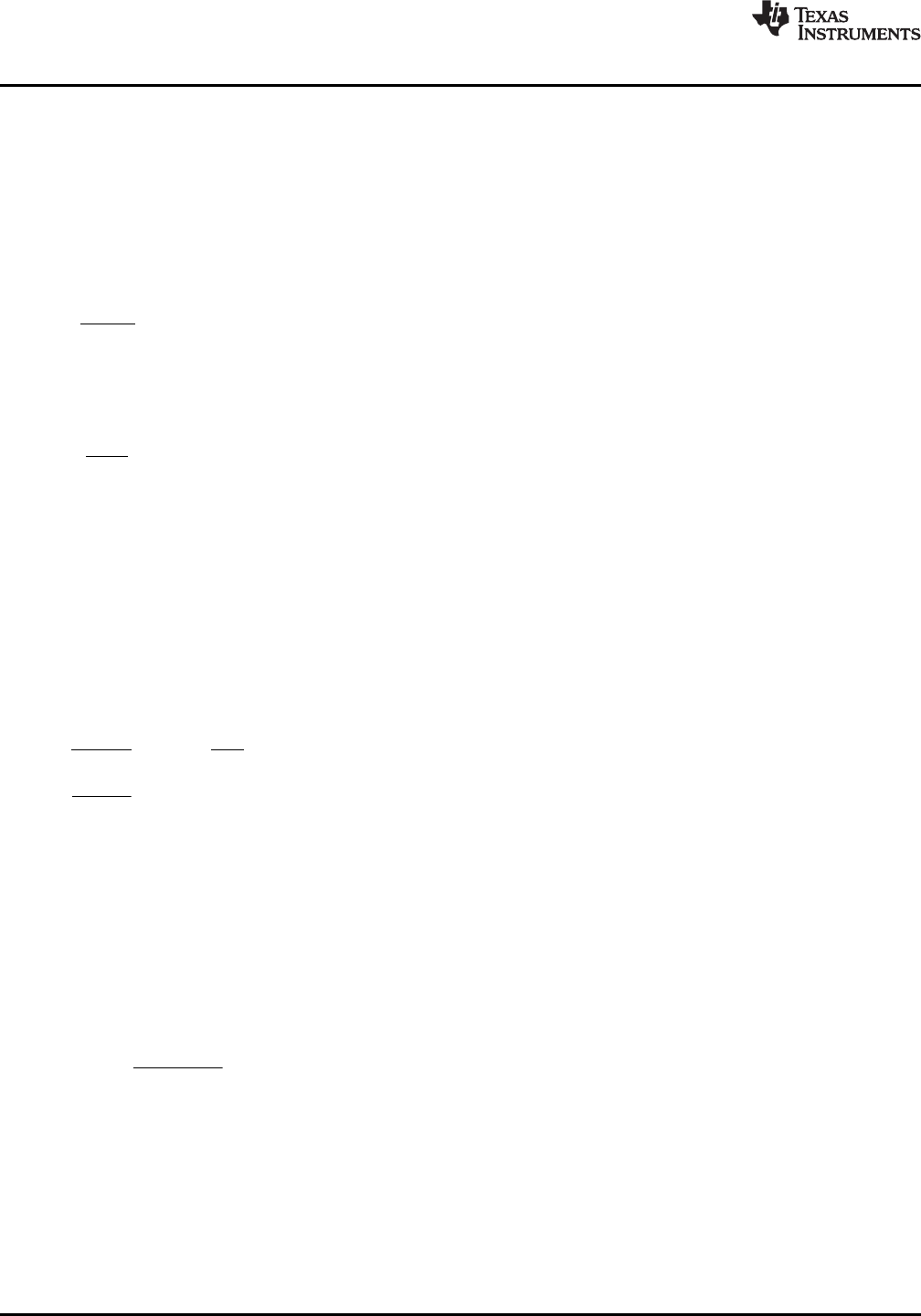Datasheet
Table Of Contents

V
OUT
= V
FB
x
(R
FB1
+ R
FB2
)
R
FB1
f
S
=
V
OUT
K x R
ON
D =
t
ON
t
ON
+ t
OFF
= t
ON
x f
S
|
V
OUT
V
IN
R
ON
=
K x f
S
V
OUT
t
ON
=
K x R
ON
V
IN
LM3150
SNVS561D –SEPTEMBER 2008–REVISED MARCH 2011
www.ti.com
THEORY OF OPERATION
The LM3150 synchronous step-down SIMPLE SWITCHER
®
Controller utilizes a Constant On-Time (COT)
architecture which is a derivative of the hysteretic control scheme. COT relies on a fixed switch on-time to
regulate the output. The on-time of the high-side switch can be set manually by adjusting the size of an external
resistor (R
ON
). To maintain a relatively constant switching frequency as V
IN
varies, the LM3150 automatically
adjusts the on-time inversely with the input voltage. Assuming an ideal system and V
IN
is much greater than 1V,
the following approximations can be made:
The on-time, t
ON
:
where
• constant K = 100 pC (1)
The R
ON
resistance value can be calculated as follows:
where
• f
s
is the desired switching frequency (2)
Control is based on a comparator and the on-timer, with the output voltage feedback (FB) compared with an
internal reference of 0.6V. If the FB level is below the reference, the high-side switch is turned on for a fixed time,
t
ON
, which is determined by the input voltage and the resistor R
ON
. Following this on-time, the switch remains off
for a minimum off-time, t
OFF
, as specified in the Electrical Characteristics table or until the FB pin voltage is below
the reference, then the switch turns on again for another on-time period. The switching will continue in this
fashion to maintain regulation. During continuous conduction mode (CCM), the switching frequency ideally
depends on duty-cycle and on-time only. In a practical application however, there is a small delay in the time that
the HG goes low and the SW node goes low that also affects the switching frequency that is accounted for in the
typical application curves. The duty-cycle and frequency can be approximated as:
(3)
(4)
Typical COT hysteretic controllers need a significant amount of output capacitor ESR to maintain a minimum
amount of ripple at the FB pin in order to switch properly and maintain efficient regulation. The LM3150 however,
utilizes a proprietary Emulated Ripple Mode control scheme (ERM) that allows the use of low ESR output
capacitors. Not only does this reduce the need for high output capacitor ESR, but also significantly reduces the
amount of output voltage ripple seen in a typical hysteretic control scheme. The output ripple voltage can
become so low that it is comparable to voltage-mode and current-mode control schemes.
Programming the Output Voltage
The output voltage is set by two external resistors (R
FB1
,R
FB2
). The regulated output voltage is calculated as
follows:
where
• R
FB2
is the top resistor connected between VOUT and FB
• R
FB1
is the bottom resistor connected between FB and GND (5)
Regulation Comparator
The feedback voltage at FB is compared to the internal reference voltage of 0.6V. In normal operation (the output
voltage is regulated), an on-time period is initiated when the voltage at FB falls below 0.6V. The high-side switch
stays on for the on-time, causing the FB voltage to rise above 0.6V. After the on-time period, the high-side switch
stays off until the FB voltage falls below 0.6V.
8 Submit Documentation Feedback Copyright © 2008–2011, Texas Instruments Incorporated
Product Folder Links: LM3150










